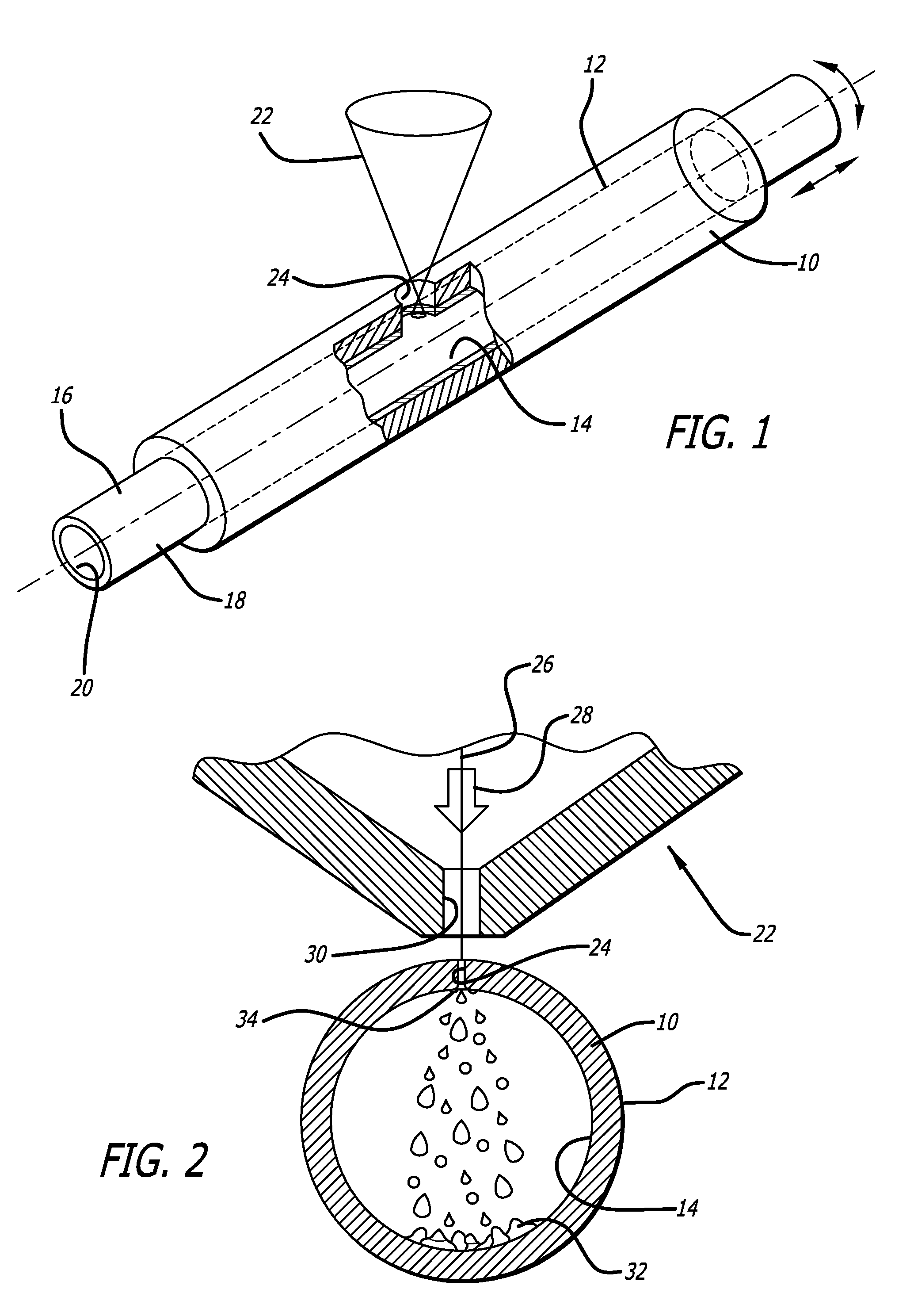Methods for laser cutting and processing tubing to make medical devices
a technology of laser cutting and processing tubing, which is applied in the field of hollow workpiece laser cutting and processing methods to make medical devices, can solve the problems of stents being more susceptible to failure, workpieces being discarded, and weakening of the opposite sidewall, and achieves the effect of cleaning and polishing the cut workpiece, less time, and greater yield of finished workpieces
- Summary
- Abstract
- Description
- Claims
- Application Information
AI Technical Summary
Benefits of technology
Problems solved by technology
Method used
Image
Examples
Embodiment Construction
[0052]Referring now to the drawing in which reference numerals represent like or corresponding elements across the drawings, and particularly FIGS. 1 and 3-5, a method of making a device from a hollow tubular member 10 is generally disclosed. The present invention relates generally to methods for laser cutting a length of hollow tubing, or as is it referred to herein a “tubular member,” to form a device, typically a medical device, such as a stent. While most workpieces formed in accordance with the present invention are in the form of a tubular member having a circular cross section, the tubular member could have a non-circular cross section as well. For example, the tubular member could have a rectangular, oval, square, and the like cross section, if desired. Moreover, the invention is not limited to forming stents and has a wide application with respect to other laser cut medical devices and non-medical products, particularly products which require a high precision pattern that i...
PUM
| Property | Measurement | Unit |
|---|---|---|
| volume ratio | aaaaa | aaaaa |
| time duration | aaaaa | aaaaa |
| width | aaaaa | aaaaa |
Abstract
Description
Claims
Application Information
 Login to View More
Login to View More - R&D
- Intellectual Property
- Life Sciences
- Materials
- Tech Scout
- Unparalleled Data Quality
- Higher Quality Content
- 60% Fewer Hallucinations
Browse by: Latest US Patents, China's latest patents, Technical Efficacy Thesaurus, Application Domain, Technology Topic, Popular Technical Reports.
© 2025 PatSnap. All rights reserved.Legal|Privacy policy|Modern Slavery Act Transparency Statement|Sitemap|About US| Contact US: help@patsnap.com



